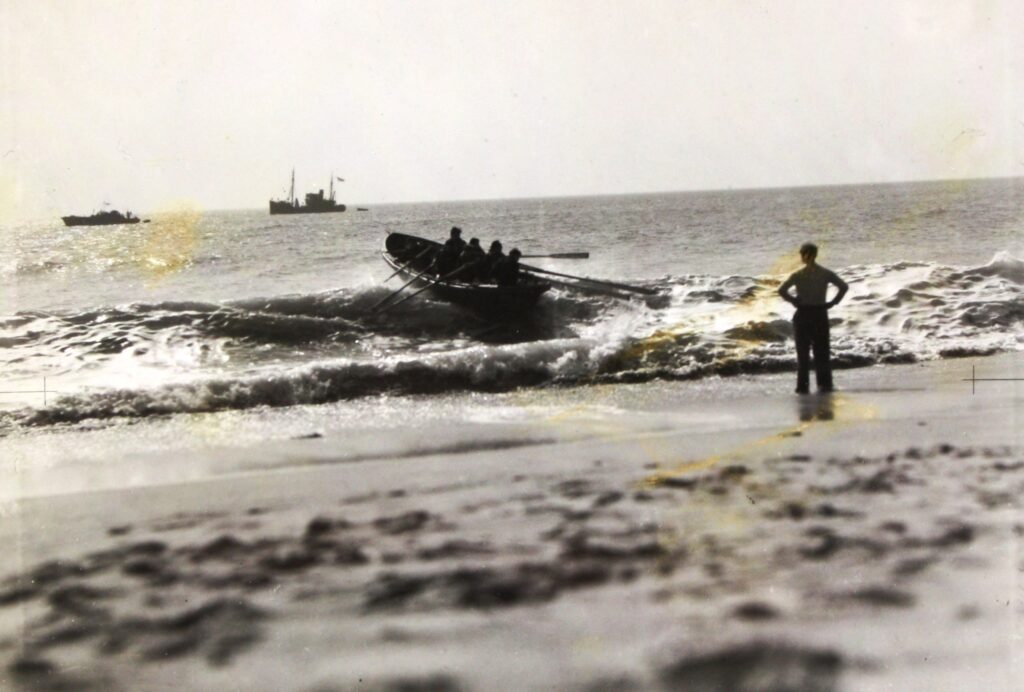Surf landing 1
4 February 2025Surf landing 2
4 February 2025In the early years of WWII, the Special Operations Executive had been having a problem landing agents on the beaches of the North Sea and commissioned the young Lieut Nigel Warington Smyth RNVR to look into the reasons. His conclusion was that they were using the wrong sort of boats.
Warington Smyth therefore collected together some boats and tested them on 7 – 8 August 1942 at Praa Sands, Cornwall, a beach he probably knew well as his parental home was on the nearby Helford River, next door to a SOE Base. It was well-chosen. The slope of the beach encourages the surf to break in most weathers, and is not as dangerous as the beach at Loe Bar which, while nearer to Helford, is steeply-shelving with a vicious undertow.
His conclusions were contained in a report entitled Operation SLIDERULE.

The SLIDERULE report mentions a newly designed boat which was being built. This was the SN 2. Once this had been completed, Warington Smyth repeated the trials in Operation PLANIMETER 16 – 21 March 1943. He was, by now, the Senior Officer of the Inshore Patrol Flotilla (SOIP) in Helford, which combined the works of the Naval SIS and the SOE, the latter being run by his brother Lt Cdr Bevil Warington Smyth.
The PLANIMETER report shows a particular interest is his understanding and description of how a wave breaks which influenced his designs.
There were further trials in February 1944 but any report on this has not survived.
